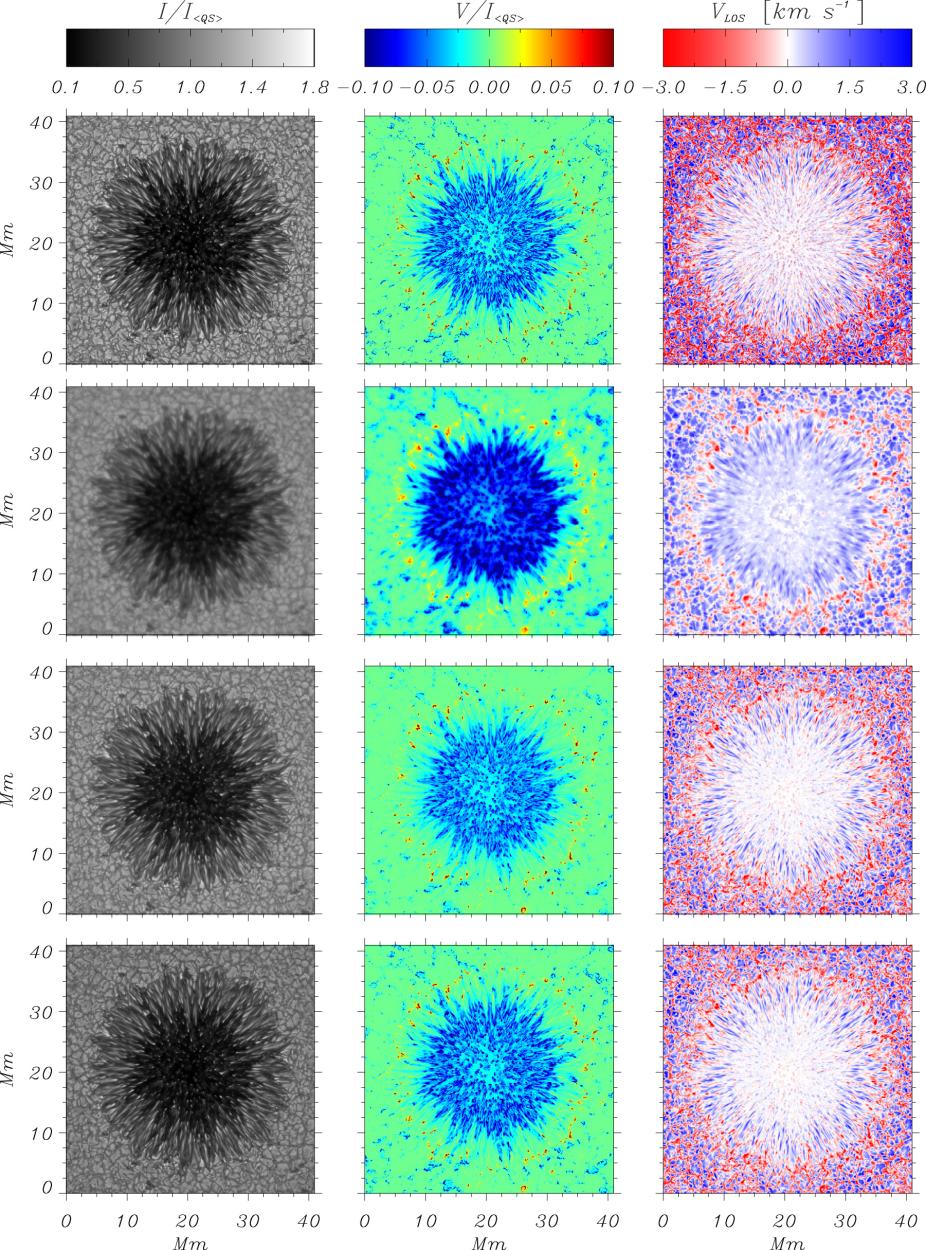Publication Name: ApJ; First HAO Author's Name: M. Rempel
Recent numerical simulations and observations of sunspots show a significant amount of opposite polarity magnetic fields within the sunspot penumbra. Most of the opposite polarity fields are associated with convective downflows.

Left panels: normalized continuum intensity at 630 nm. Middle panels: Stokes V far wing magnetogram. Right panels: bisector velocity at 80% for Fe i 6301.5 Å. First row: at simulation resolution. Second, third, and fourth rows: at Hinode (0.5 m), 1 m, and 1.5 m resolutions.
We present an analysis of 3D MHD simulations through forward modeling of synthetic Stokes profiles of the Fe I 6301.5 Å and Fe I 6302.5 Å lines. The synthetic Stokes profiles are spatially and spectrally degraded considering typical instrument properties. Line bisector shifts of the Fe I 6301.5 Å line are used to determine line-of-sight velocities. Far wing magnetograms are constructed from the Stokes V profiles of the Fe I 6302.5 Å line. While we find an overall good agreement between observations and simulations, the fraction of opposite polarity magnetic fields, the downflow filling factor, and the opposite polarity-downflow association are strongly affected by spatial smearing and presence of strong gradients in the line-of-sight magnetic fields and velocity. A significant fraction of opposite polarity magnetic fields and downflows is hidden in the observations due to typical instrumental noise. Comparing simulations that differ by more than a factor of two in grid spacing, we find that these quantities are robust within the simulations.